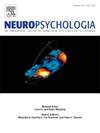Grasp context-dependent uncertainty alters the relative contribution of anticipatory and feedback-based mechanisms in object manipulation
Abstract
Predictive control within dexterous object manipulation while allowing for the choice of contact points has been shown to employ a predominantly feedback-based force modulation. The anticipation is thought to be facilitated through the internal representation of the object dynamics being integrated and updated on a trial-to-trial basis with the feedback of contact locations on the object. This is as opposed to the classically studied memory representation-based fingertip force control for grasping with pre-selected contact locations. We designed a study to examine this grasp context-dependent asymmetry in sensorimotor integration by introducing binary uncertainty about the grasp type before movement initiation within the framework of motor planning. An inverted T-shaped instrumented object was presented to 24 participants as the manipulandum, and they were asked to reach, grasp, and lift it while minimising the peak roll. We dissociated the planning and the execution phases by pseudo-randomly manipulating the availability of visual contact cues on the object after movement onset. We analysed both derived as well as direct kinetic and kinematic measures of the grasp during the loading phase to understand the anticipatory coordination. Our findings suggest that uncertainty about the grasp context during movement preparation resulted in a shift towards feedback-based mechanisms for grasp force modulation despite the persistence of visual cues.

 求助内容:
求助内容: 应助结果提醒方式:
应助结果提醒方式:


